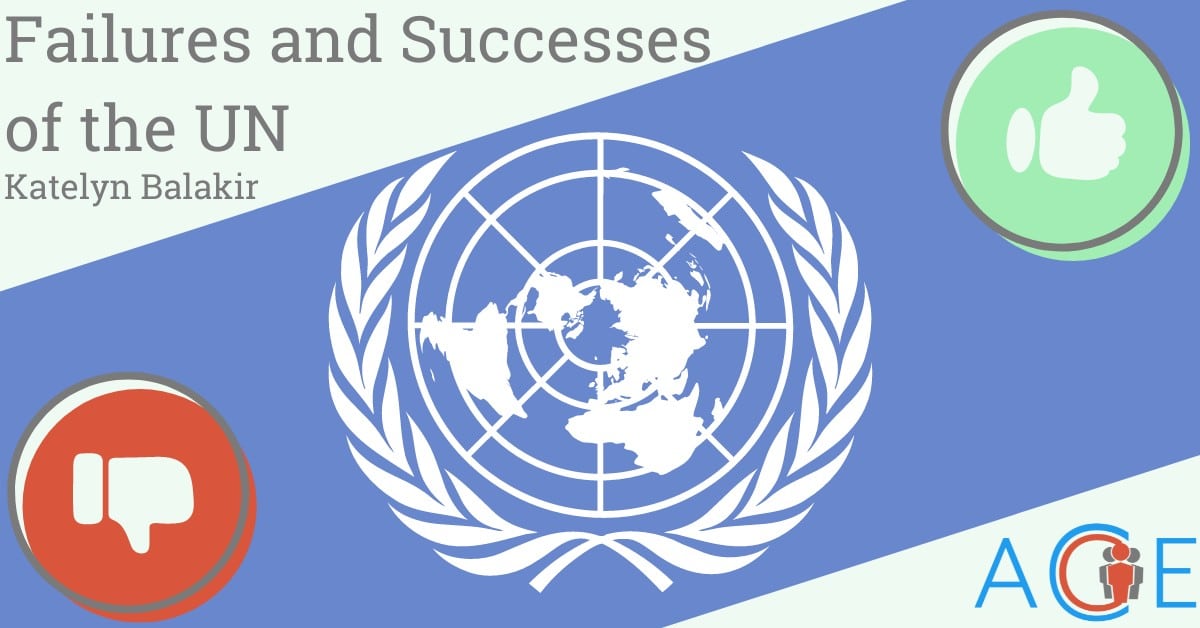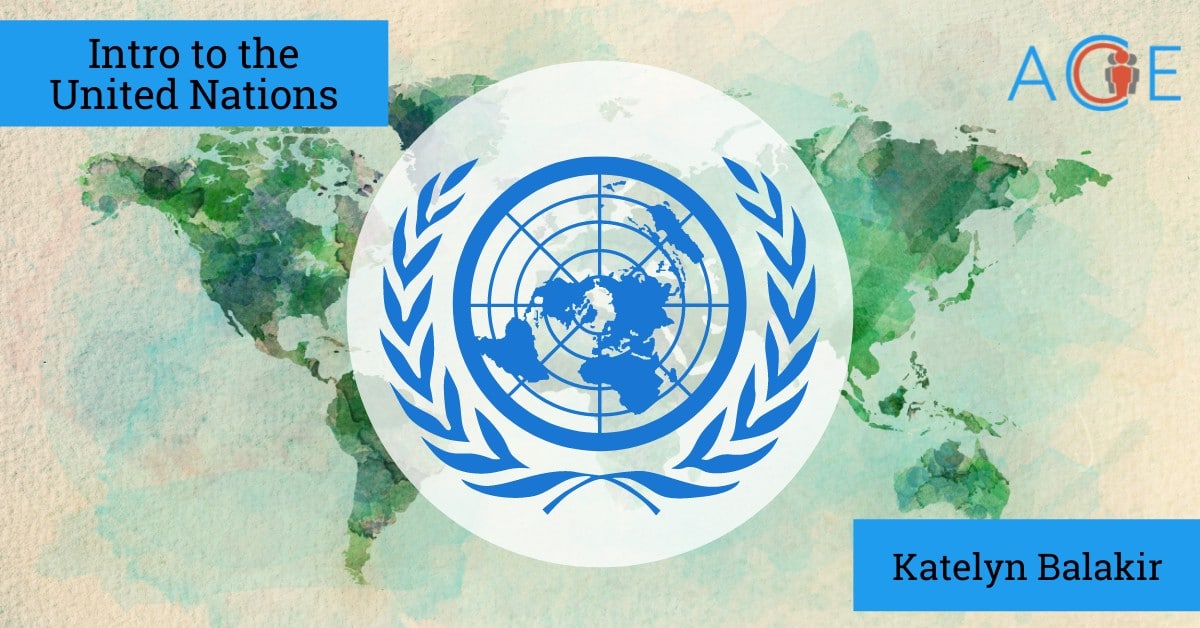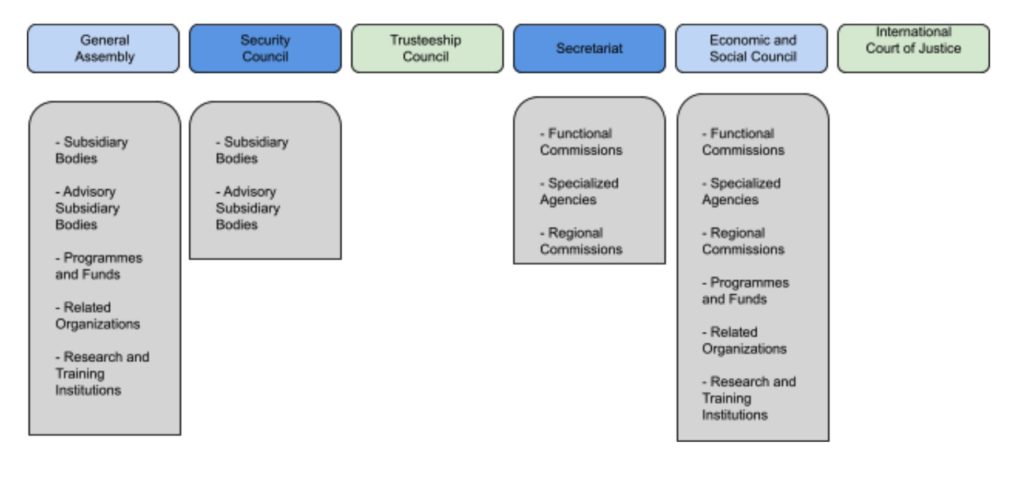Introduction
76 years and half a trillion dollars later, the international community is divided on the effectiveness of the United Nations. Overall, the UN has a positive international image but the partisan divide over supporting the UN has widened, particularly in the United States. The United States’ perception of the UN is important since the United States is the largest donor to the UN and accounts for roughly 20% of the UN’s collective budget.
Successes
1. Material assistance: the United Nations provides a lifeline to millions of people across the world. The World Food Program provides food and cash assistance to over 80 million people. The United Nations provides aid to nearly 69 million displaced people who fled their home due to persecution, conflict, or human rights violations. Furthermore, UN agencies supply 45% of the world’s children with vaccines, saving an estimated 2 to 3 million lives each year from preventable diseases.
2. Human rights: the United Nations established the first comprehensive framework for human rights law. The organization defined human rights through the Universal Declaration of Human Rights and the subsequent International Covenant on Economic, Social, and Cultural Rights and the International Covenant on Civil and Political Rights. Together, these documents defined the rights to equality, free movement, education, religion, and asylum, along with many others. The UN also established mechanisms to promote and protect the rights it outlines. The Human Rights Council, composed of 47 representatives, conducts a review every four years where it assesses the human rights record of all UN member states and presents nations with recommendations. The Council recently came under scrutiny for allowing China to become a member following reports of flagrant human rights abuses against Uyghur Muslims. The UN High Commissioner for Human Rights coordinates the oversight bodies which are responsible for enforcing treaties after they are ratified. Although it is unclear whether recommendations and oversight result in legislative changes, the UN’s efforts at the very least create an international standard for nations to strive towards.
3. Decolonization: when the UN was founded in 1945, 750 million people lived in territories controlled by a colonial power. Less than 2 million people live under colonial rule today. A key feature of the human rights framework of the United Nations involves every nation’s right to sovereignty and self-determination. The General Assembly passed multiple resolutions on decolonization, including its landmark Declaration on the Granting of Independence to Colonial Countries and Peoples and four International Decade for the Eradication of Colonialism resolutions. The Special Committee on Decolonization regularly reviews the list of non-self governing territories and invites representatives from these territories to issue statements at its annual sessions. The UN played a major role in decolonization efforts following WWII and continues to provide a forum to discuss international objectives like decolonization.
Limitations
1. Enforcement mechanisms: a recurring criticism of the UN is its inability to effectively enforce mandates. The UN is only as effective as member states allow and members go to great lengths to ensure national sovereignty. Therefore, General Assembly resolutions are typically considered to be recommendations. The Security Council is able to enforce its resolutions by means of sanctions or military force, but any one of the five permanent council members can veto a bill so harsh mechanisms are not frequently used.
2. Security Council inaction: the Security Council is tasked with taking action to maintain international peace and security, however the veto poses an obstacle to action. P-5 nations ultimately determine what conflicts constitute actionable threats to international peace and security by exercising their veto power. Unsurprisingly these nations have advanced their national interests since the Council’s inception. Following the political and humanitarian crisis in Venezuela, the P-5 nations were in a deadlock. The United Kingdom, United States, and France presented a resolution declaring the Venezuelan election illegitimate and calling for new elections. Russia and China proposed a resolution condemning outside intervention in the election process and called for dialogue in Venezuela. Both resolutions failed and the deadlock delayed the delivery of critical aid. P-5 nations disagree on how most conflicts should be handled causing frequent inaction in the UNSC.
3. Western domination of UN institutions: despite its mission emphasizing inclusion and representation, the UN is typically viewed as a Western-oriented organization. From the UN’s inception, European and American interests have prevailed. One example is developmental aid. Institutions like the International Monetary Fund and the World Bank are primarily responsible for coordinating economic development efforts while the UN provides guidelines for sustainable development and oversight. Together, they implement the UN’s economic development framework. Both the IMF and World Bank condition loans on neoliberal features like trade liberalization, private enterprise, and an overall reduction in public spending (i.e. the size of government). These practices were especially controversial during the height of the COVID-19 pandemic when the IMF conditioned loans on tight austerity measures like reductions in public health spending and unemployment benefits.
Peacekeeping: The Intersection of Success and Failure
While the UN has successfully led a number of peacekeeping missions and promoting peace and security is integral to its mission, it failed to intervene in a timely manner and prevent genocide in Rwanda and Bosnia. Institutional shortcomings contributed to grave UN peacekeeping failures in both Rwanda and Bosnia. First, UN peacekeepers are held to a strict mandate to only use force in self-defense or to help evacuate foreigners. Second, the UN failed to train peacekeepers to negotiate with perpetrators of violence against civilians. Similarly, there existed a cultural disconnect between the training peacekeepers received and the reality of local communities.
More generally, peacekeeping is limited in that intervention requires the consent of the host government and other parties to the conflict which makes swift action more difficult.
Future of UN Operations
The UN is currently facing large financial constraints in light of the pandemic and the growing number of individuals in need of assistance across the globe. As of September 2020, member states only paid 60% of their contributions to the UN’s general budget. As a result, some UN-appointed human rights experts who work under the Human Rights Council were unable to carry out their mandate to monitor and address human rights abuses. The UN High Commissioner for Refugees operated with 47% of its $9.1 billion budget and cut back on programs providing emergency shelter, water, and food to refugees. UN operations as we know it are at risk if nations fail to bolster financial support for the organization.
Furthermore, the UN is still recovering from Trump’s presidency characterized by an isolationist approach to foreign policy. During the Trump era, the United States left the Human Rights Council, the United Nations Educational, Scientific, and Cultural Organization (UNESCO), threatened to withdraw from the World Health Organization, and ended its commitment to numerous international agreements like the Paris Climate Accords. The UN heavily relies on the United States for funding and assistance with key programs. Although President Biden recommitted the United States to the UN, US reliability and credibility took a hit.




